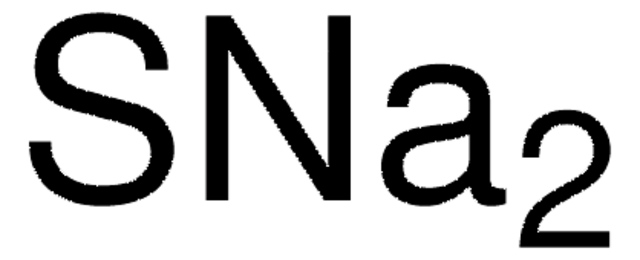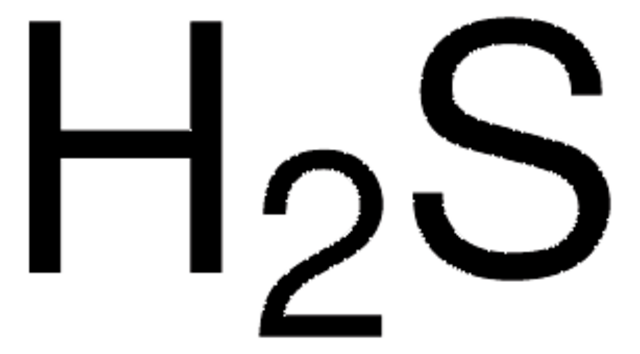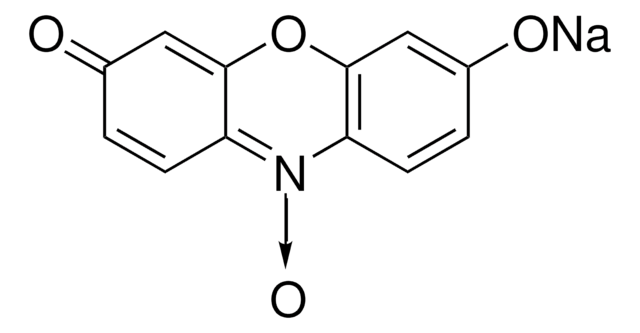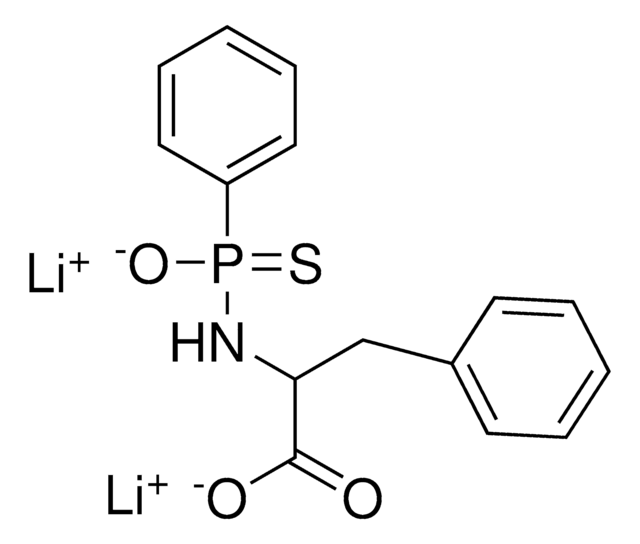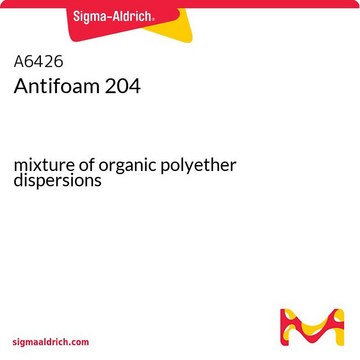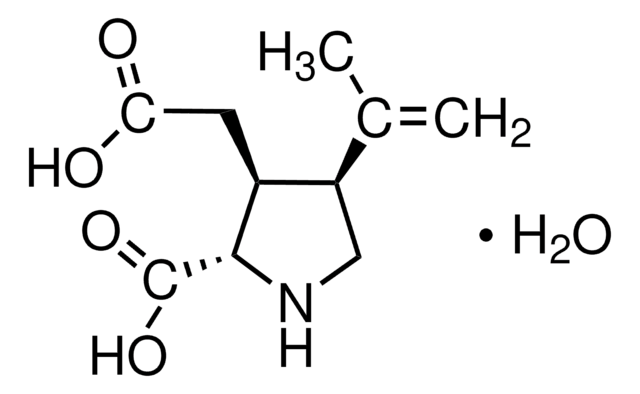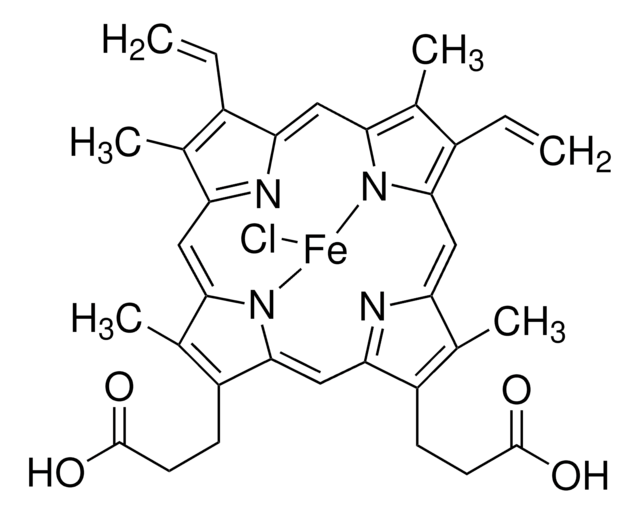Kluczowe dokumenty
208043
Sodium sulfide nonahydrate
ACS reagent, ≥98.0%
About This Item
Polecane produkty
klasa czystości
ACS reagent
Poziom jakości
Próba
≥98.0%
Formularz
crystals or chunks
przydatność reakcji
reagent type: catalyst
core: sodium
kolor
colorless to slightly yellow
ślady anionów
SO32- and S2O32-: ≤0.1%
ślady kationów
Fe:, passes test
NH4+: ≤0.005%
temp. przechowywania
2-8°C
ciąg SMILES
O.O.O.O.O.O.O.O.O.[Na]S[Na]
InChI
1S/2Na.9H2O.S/h;;9*1H2;
Klucz InChI
UIINQVYGFKNSPA-UHFFFAOYSA-N
Szukasz podobnych produktów? Odwiedź Przewodnik dotyczący porównywania produktów
Opis ogólny
Zastosowanie
It serves as a catalyst during synthesis of thioamides.
Hasło ostrzegawcze
Danger
Zwroty wskazujące rodzaj zagrożenia
Zwroty wskazujące środki ostrożności
Klasyfikacja zagrożeń
Acute Tox. 3 Dermal - Acute Tox. 4 Oral - Aquatic Acute 1 - Aquatic Chronic 1 - Eye Dam. 1 - Skin Corr. 1B
Kod klasy składowania
6.1D - Non-combustible acute toxic Cat.3 / toxic hazardous materials or hazardous materials causing chronic effects
Klasa zagrożenia wodnego (WGK)
WGK 3
Temperatura zapłonu (°F)
Not applicable
Temperatura zapłonu (°C)
Not applicable
Wybierz jedną z najnowszych wersji:
Masz już ten produkt?
Dokumenty związane z niedawno zakupionymi produktami zostały zamieszczone w Bibliotece dokumentów.
Klienci oglądali również te produkty
Nasz zespół naukowców ma doświadczenie we wszystkich obszarach badań, w tym w naukach przyrodniczych, materiałoznawstwie, syntezie chemicznej, chromatografii, analityce i wielu innych dziedzinach.
Skontaktuj się z zespołem ds. pomocy technicznej
